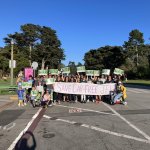In the midst of her grief, Gina took action to prevent others from suffering
At 1:30 in the morning on January 25, 2016, Gina and her husband were awakened by a knock on the front door. When they opened the door, a police officer stood on the other side. The officer told them their son Kyle had been taken to the emergency room. He was “having trouble communicating.” That’s all they knew.
Gina and her husband didn’t yet know that Kyle, five months shy of his high school graduation, had been struck by a speeding driver while walking home from the light rail station earlier that night.
When Gina and her husband arrived at the hospital, they raced to the front desk. Gina knew exactly where to go because she was a neonatal intensive care nurse at that very hospital. She’d worked there for 22 years.
The news Gina was about to get was what no mother should ever have to hear, and more than any mother can bear. She was told in a public hallway that Kyle was brain dead and that they needed to remove life support.
As Gina took this news in, there were hospital employees laughing and chatting at the front desk nearby. As Gina and her husband navigated the next hours and days, they were never offered any support resources or social worker contacts.
Later on, Gina felt an extra sense of devastation at how the hospital she knew so well had failed her – and likely many others. “I knew I couldn’t have been the first person this had happened to,” said Gina.
In the following weeks, Gina did something very important in the midst of unimaginable grief. She pulled out her hospital directory and contacted the CEO and the director of every major department: Medicine, Nursing, Quality, and the Emergency Room Nurse Manager.
As a result, Gina changed everything for families arriving at the hospital after a trauma. A Family Care Training was implemented for the entire ER, including a new suite of expectations for how a patient’s loved ones are treated.
Gina also developed a robust post-crash resource guide to be shared with loved ones of a crash victim. The first pages are devoted to Kyle’s story and include a testimonial from fellow Families for Safe Streets community member Jorge Quiroz, whose 5-year-old daughter Aileen was killed by a distracted driver in 2013 as she walked to school with her aunt and sister. It also has information on how to connect with Families for Safe Streets.
“I have to do whatever I can to prevent others from suffering like I have,” said Gina. She has told her story to elected officials, at public hearings, and in the media to bring urgency to traffic safety. It’s never easy – for Gina or anyone who’s part of Families for Safe Streets – but the importance of these voices can’t be understated in winning change.
Gina’s sentiment about preventing suffering is echoed by many other members, both here in the Bay Area and across the country. People who have been impacted by traffic violence are working in countless ways to prevent crashes, and to create support systems for the loved ones of victims and crash survivors.
We need your help to reach more people who have been affected by traffic crashes to offer the support of Families for Safe Streets. If there is a social worker, a physician, nurse, faith leader, or community group you would like us to connect with, please let me know at aly@walksf.org.
Learn more about San Francisco Bay Area Families for Safe Streets, including the emotional support resources and events we offer. To learn more about the Families for Safe Streets movement, read the New Yorker piece on how this movement started.
Banner image by William McLeod from the 2021 World Day of Remembrance for Road Traffic Victims.




